Career Conspirators: The (Mis)Adventures of Séan Ó Muirthile and the Irish Republican Brotherhood in the Free State Army, 1923-4
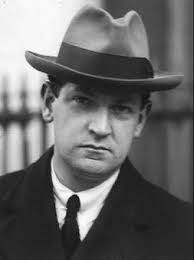
Pro-Treaty activists and the Irish Republican Brotherhood, 1922-24. By Daniel Murray. See also his previous articles on the IRB here and here.
Future Plans
By January 1923, with the Irish Civil War still ongoing, Séan Ó Muirthile was a busy man as Quartermaster General of the Free State’s National Army. Not too busy, however, to turn his thoughts towards an issue that he believed needed serious consideration: the state of the Irish Republican Brotherhood (IRB).
Some prominent army officers had been wondering amongst themselves about the future of the Brotherhood to which they had previously belonged. In theory they still did, but the Supreme Council of the IRB had not met since the January of the previous year, and neither had there been meetings of the local branches throughout Ireland. The policy had been to await events and then set about re-uniting the Organisation, as insiders were supposed to refer to it. If the time for this was not now, then when?
The IRB had splintered over the Treaty. Sean O Muirthile and other pro-Treaty Army officers wanted to revive it.
It was entirely natural that these officers would bring such concerns to Ó Muirthile. He was, after all, one of the few remaining members of the Supreme Council still around, not to mention a former confidant of the late Michael Collins.
Commander-in-Chief of the Army as well as President of the IRB, Collins had exemplified the dual role of soldier and operative that many in the Army were eager to emulate. Certainly, Ó Muirthile had little doubt that Collins, had he lived, would have continued using the Organisation in the pursuit of achieving further freedom for Ireland.[1]
First Steps
With these questions in mind, Ó Muirthile consulted the other Supreme Council members who were also serving in the Army. The basic points that were agreed upon in their January meeting were that:
- The proud tradition of the IRB should be preserved and passed onto those loyal to the Free State government.
- This effort would fall upon the previous members of the Supreme Council.
- The Free State government must not be prejudiced or subverted in any way even if any members of its Executive Council were also in the IRB.
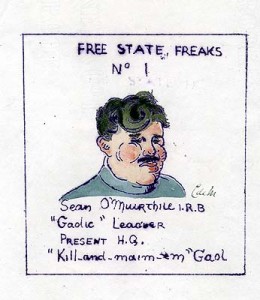
The seriousness of this last point is an open question. The past record of the IRB did not indicate an unwillingness to wield its underground influence on the other bodies it had infiltrated, whether they were the Irish Volunteers, the Gaelic League, Sinn Féin or others. Whether the Free State Army would be the exception, however, would remain to be seen, as there was still plenty of work to be done on the first two points.
This was begun in earnest a few weeks later. The matter of a revived IRB was put to a number of army officers stationed in Dublin who had also been IRB Centres, or junior officers (each Centre being in charge of a Circle, the basic unit of the IRB, consisting of no more than 10 members). The feedback was positive, with the consensus of opinion being that these proposals could be put into effect.
The only caveat was that a new constitution should be written to accommodate IRB men serving in the Army. After an existence on the outskirts of power, the fraternity would have to adjust to being on the inside.[2]
A New Constitution
A copy of such a constitution gives an idea as to how this accommodation could have been managed. Titled ‘I.R.B. Constitution – 1923 (Provisional?)’, it can be found in the papers of Florence O’Donoghue. Once a prominent IRB/IRA officer, he had dropped out of both, disillusioned by the fratricide of the Civil War.
O Muirthile proposed centring he revived IRB in the National Army officer corps
The document had been sent to O’Donoghue by a “D. Lynch”, possibly Diarmuid Lynch, another former IRB man. Whoever the sender, he had noted at the top of the document: “This copy was made by me of the new official draft (which I was not supposed to have seen).”
Another annotation in the margins identified Ó Muirthile and General Richard Mulcahy as the ones who had presented this proposed constitution to the Army. Truly, this revived IRB was moving in elevated circles.
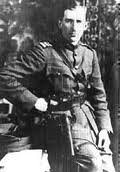
The successor to Michael Collins as the Commander-in-Chief, Mulcahy had also sat on the IRB Supreme Council with Ó Muirthile before the Civil War. It was a sign that the new IRB would be continuing with the old leadership.
Much of the document is a rehash of material from past IRB constitutions. This is unsurprising, given that it was supposed to be building on an already established society, but there are some noteworthy, not to say disturbing, innovations.
One such is the Clause 13(b): in addition to the Divisions for different Irish counties (15 and a 16th for Great Britain) as before, there were to be eleven parallel Divisions for the Army, each based on a different command post. The 1st Division encompassed G.H.Q., the second was for the Dublin Command, the third for the Curragh Command, and so on.
To no other institution in the Free State did the Constitution pay such particular attention; as far as the new IRB was concerned, the Army was very much its territory, to be managed accordingly.
While the groupings of the rest of the Organisation consisted of ‘Circles’, those within the Army would be ‘Clubs’ but otherwise would follow the same arrangements, with the Clubs not exceeding ten members unless authorised by the Supreme Council, and each to be headed by a Centre who would report up the IRB chain of command. The new additions were intended to work seamlessly with the old, an exception being that a Club member could not also be in a civilian Circle.
Every Power and Movement in the Nation
The Supreme Council was to be expanded accordingly. There would be twenty-eight members, as opposed to the fifteen in the 1920 Constitution: one from each of the sixteen Divisions covering the country, and eight out of the eleven Army Divisions. The remaining four would be co-opted by the remainder.
Thus constituted, the Supreme Council would be ready to pursue its stated aims:
Objects 1. The objects of the Irish Republican Brotherhood (hereinafter sometimes called “The Organisation”) shall be: – To establish and maintain a free and independent Republican Government in Ireland.
Policy 2(a) Whereas National Sovereignty is inherent and inalienable and, while acknowledging that political authority is exercised through instruments legitimately expressed, the Irish Republican Brotherhood pledges itself the custodies of the Republican Ideal – the traditional expression of National Independence.
(b) The policy of the IRB shall be to utilise every power and movement in the Nation, it shall influence them in their activities so as to secure that the maximum organised strength of the Nation – armed, economic, political, social and otherwise shall be at all times available for the achievement of its objects.[3]
It is hard to say how much of a finished product this document was intended to be: a rough draft or the final instructions. But it is not the proclamation of an organisation that was planning on going away anytime soon.
The new IRB constitution pledged itself to the pursuit of the ‘Republican ideal’ –
Instead, it showed a leadership that was thinking in the long term. It was prepared to be innovative, with its expanded Supreme Council and the formation of ‘Clubs’ to fulfil the role of Circles’. But in its assurance of itself as the only true keeper of the Republican flame and the willingness to use others in the pursuit of that self-appointed mission, it had revealed itself as very much the IRB of old.
Tom Barry’s Plea
Ó Muirthile and his Army colleagues were not the only ones considering what a resuscitated IRB could bring. Four months after agreeing to revive the Organisation, Ó Muirthile had an appointment in his office with Sean O’Hegarty in May 1923. The former O/C of the Cork 1st Brigade, O’Hegarty had remained neutral during the Civil War, though he remained in close contact with many of his former comrades.
It was on behalf of one of these compatriots, Tom Barry, the famed leader of the West Cork Flying Column, that O’Hegarty had asked for the meeting.
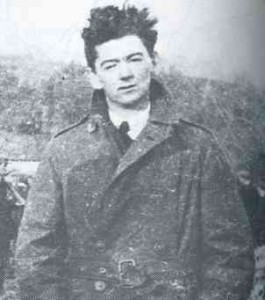
O’Hegarty delivered to Ó Muirthile a letter written by Barry. Announcing himself as “an officer in the Organisation in County Cork,” Barry appealed to the pro-Treaty IRB to use its influence towards stopping the manhunt of the embattled Anti-Treatyites, many of whom, like Barry, considered themselves as much a part of the Brotherhood as their Free State counterparts.
The Brotherhood, Barry argued, should come together again as one body in order to not lose sight of its ideals, particularly as there was still work to be done for the Republic.
Beneath the stirring rhetoric, Barry was counting on the IRB to facilitate an honourable climb-down for both sides. As far as Ó Muirthile was concerned, that horse had well and truly left the stable.
Tom Barry, an anti-Treaty IRA commander, hoped to use the IRB to bring the Civil War to an end. He was dismissed by O Muirthile
Another prominent Anti-Treatyite, Liam Deasy, had already signed a public document while imprisoned, urging his partisans to surrender themselves and their arms to the Free State. Ó Muirthile curtly declined to pass on Barry’s message to the rest of the Army Council, and told O’Hegarty that if the Anti-Treatyites had any interest in stopping the fight, they should consider Deasy’s example.
For Ó Muirthile, the only value of the meeting was how it revealed the depths of the despair among the Anti-Treatyites. If a fighter like Barry was close to breaking point, then there was little hope for the rest. Contrary to what he told O’Hegarty, he did discuss the matter with Mulcahy and the rest of the Army Council. They likewise were indifferent, and nothing was passed onto the government.
Barry’s hopes for the Brotherhood as a bridge between the two sides had been mired in sentimentality and wishful thinking. Ó Muirthile’s dismissal was pitiless but clear-headed. From then on, any new incarnation of the IRB would be formed on the Army’s terms.[4]
Roads Not Taken
While a failure, Barry’s letter did provide a convenient excuse when the re-emergence of the IRB became public knowledge in the wake of the Army Mutiny of 1924. Speaking to the Dáil on the 26th June 1924, Richard Mulcahy quoted a note he had made shortly after learning of the offer from Ó Muirthile, with the following points:
The Anti-Treatyites had tried to form their own IRB to strengthen their grip on their members.
- That Barry’s letter was addressed to the Supreme Council showed his recognition of its authority.
- That the letter came from Barry was particularly important given his reputation as a fighter.
- The IRB might be utilised as a body for which the Anti-Treatyites could acquiesce in terms of them disbanding without humiliation.
- That there was no group other than the IRB in such a position made the situation a delicate one.[5]
The first point is a peculiar one as there had been nothing in Barry’s letter about attempts among the Anti-Treatyites at forming a counter-IRB. It is possible that Mulcahy had heard about the musings of Liam Lynch, the IRA Chief of Staff, about reforming the IRB Supreme Council, and the Brotherhood in general, along Anti-Treatyite lines.[6]
Although nothing came of such plans, they showed that the IRB was still indeed considered a valid institution by many on the Anti-Treaty side, and that Mulcahy’s hopes were not entirely without substance.
Mulcahy made a second note a few days later, expanding on his original thoughts:
- The Anti-Treatyite IRA was at a dead end as a body and should disband, with only the IRB able to provide a pivotal point to arrange this.
- The IRB was fully controlled by the Army Council. It was possible that within a couple of years, the IRB could evolve into an open political society, much like the Irish Volunteers had done.
- While the Government might not want to associate with a secret society like the IRB, it was essential that the state control the moulding of the Organisation, both as a constructive entity and as a means for penitent Anti-Treatyites to withdraw from the Civil War with honour.[7]
For National Army commander in Chief Richard Mulcahy, the IRB was an organisation which it was necessary for pro-Treaty forces to control for state security.
The problem with these noble-sounding, if wistful, ambitions is that there is no evidence of any attempts to put them into practice. Ó Muirthile’s later account made it clear that the reaction of the Army Council, including Mulcahy, towards the letter was an imperious, if not contemptuous one – hardly the best basis for an IRB outreach programme.
Whether the IRB could become an open society and not a secret one, using the Irish Volunteers as its template, is a question that would never be answered. However, there is nothing in the 1923 Constitution to suggest any such leanings. If anything, the old oath to keep the secrets of the Brotherhood and the right of the Supreme Council to punish any errant members remained on paper.
As for the notion of the state being allowed to guide the IRB, that would again contrast to the list of goals in the 1923 Constitution which made it plain that the new role of the Organisation was to be the other way around. Far from being given the keys to the Brotherhood, state ministers were kept in the dark for long as they could be.
Suspicious of rumours he was hearing about Army officers being summoned from all over the country to sit in secret sessions, the Minister of Justice, Kevin O’Higgins, confronted Mulcahy in February 1923. With no small amount of chutzpah, the general blandly denied that there was anything behind such reports.
Mucahy’s statements to the Dáil must thus be seen as excuses and rationalisations after the fact, for all the evidence points to the IRB being for the IRB first and foremost.
Kevin O’Higgins Concerns
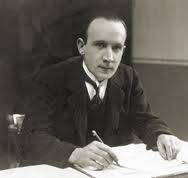
This revived IRB was to be very much an elitist affair. The informal meetings that Ó Muirthile had characterised the IRB revival had been between those with previous experience in the administrative roles for the Organisation. Ó Muirthile took care to consult former Supreme Council members and IRB officers but made no effort to reach out to ordinary initiates.
This was more than mere thoughtless but part of a glass-ceiling policy. As he described later in his memoirs, Ó Muirthile did not think it wise to be indiscriminate in the shaping of the new Brotherhood. This cartel within a cabal soon led to resentment among those on the outside, a simmering discontent that would have ruinous consequences for all concerned.[8]
Kevin O’Higgins Minister for Home Affaris was alarmed by the prospect of a revived secret society within the National Army.
But before that, Ó Muirthile had more immediate worries. Shortly after seeing O’Hegarty, Ó Muirthile heard that Kevin O’Higgins, the Minister for Home Affairs, had found out about the efforts within the Army to revive the IRB. Wishing to head off any future problems, Ó Muirthile discussed the matter with Mulcahy, and they agreed to invite O’Higgins to a meeting where they could soothe his fears.
As O’Higgins later recalled, Mulcahy came to him “in a purely personal way” which the minister found distasteful. Another bit of overfamiliarity was how the general referred to Séan Ó Muirthile by name rather than by his rank of Lieutenant-General. O’Higgins made his displeasure plain at the subject of the IRB. He may also have been a member in the pre-Truce days but now, secret societies could only be detrimental to the state of the Army, not to mention the country. Mulcahy accepted this but asked O’Higgins to come along to the meeting all the same.[9]
It was on this unpromising start that the meeting was held on the 10th July in the office of President W.T. Cosgrave. Cosgrave was present along with O’Higgins and the Minister for Education, Eoin MacNeill. Representing the IRB were Ó Muirthile and Mulcahy. Ó Muirthile began by bringing up the subject of Tom Barry’s letter, which was discussed in a general way by those present but resulted in nothing definite.
The talk then turned to the IRB. Ó Muirthile was happy to outline to his audience the activities of the society before and after the Treaty. He was to leave the meeting confident that the ministers had understood his position and accepted the IRB as part of the new state of affairs.
On that score, however, Ó Muirthile was to be very, very much so mistaken.[10]
A Conspiracy against the Conspiracy
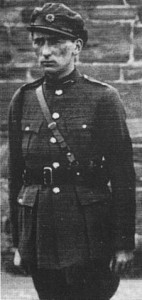
Another erroneous assumption on Ó Muirthile’s part was that the junior IRB members who found themselves disenfranchised would passively acquiesce. A rival faction was formed out of these frustrations: the IRA Organisation (IRAO), also called the Old IRA or the Tobin Gang after Liam Tobin, one of its ringleaders and former Intelligence Officer for in Michael Collins’ Squad.
Tobin added the foreword to The Truth about the Army Crisis, the document disseminated by the IRAO to explain its motives and grievances. The impact The Truth had on a wider audience is doubtful, and there no evidence that it rallied any segment of the Irish public to its cause, but it does reveal much about the conflict between the IRAO and the IRB, how they differed and, more importantly, where the groups overlapped.
The main difference between The Truth’s and Ó Muirthile’s version of events is which group came first: the IRB or the IRAO. According to the former, the IRB had never gone away to begin with, and was keen to stress the continuity between the ideals of the IRB of old and the aspirations of the new:
The big majority of the (IRB) members…accepted the Treaty as a means towards complete independence, and felt, when they joined the Free State Army, that they were acting in accordance with the spirit and tradition of the Brotherhood, and, of course, they all had the continuity of the Organisation in mind.[11]
By mid 1923 there were two rival secret societies in the Army – the IRB and the IRAO.
The appearance of the IRAO seems almost incidental in Ó Muirthile’s account. He went so far as to deny that the two factions were even rivals.[12] This seems highly disingenuous in light of the IRAO’s insistence that their insubordination against the Army Council was fuelled by the hostility of the IRB, which they clearly equated with the Council.
In The Truth, the new IRB was not created until after the IRAO had already been set up. Alarmed by the banding together of those soldiers who were dissatisfied with the direction the Army was taking, the Army Council set up what it called the IRB in order to counteract the IRAO’s counteractions. These efforts culminated in an ultimatum from one of the Army Council to the new group: “Drop your organisation and we will drop ours.”[13]
The Truth drips with contempt that the new so-called Irish Republican Brotherhood could ever call itself such. If it was truly the IRB of old, the reader is asked, why were the IRAO members not advised on its re-organisation, considering how they had been IRB members from before. Clearly, the disgruntled soldiers saw nothing wrong with the reappearance of the IRB, just that they had not been invited to the party.
Also revealing is the language in The Truth. With its talk of the “national ideal” and what should be done for “the Nation”, not to mention the liberal invoking of Michael Collins’ name, the self-righteous, self-assured tone of the IRAO were more than a little reminiscent of that used in the 1923 IRB Constitution. Whatever their differences, the two societies were reading from the same hymn sheet.[14]
A Continuity IRB?
While neither is unpartisan in their accounts, Ó Muirthile’s and the IRAO’s were truthful enough in how both groups discussed a merger as a way of resolving the conflict. According to Ó Muirthile, this never got beyond the talking stage due to the same prejudice the IRB showed towards any prospective members who had not held a senior role from before.[15]
The Truth was more detailed about the series of talks and meetings which the IRAO came to believe were merely stalling tactics on the part of the IRB. Mulcahy at one point promised the IRAO places on the IRB Supreme Council. This was not kept. Another meeting between the IRAO and the IRB, the former in the persons of Mulcahy and Ó Muirthile, saw the same promise of representation on the Supreme Council made. When pressed, however, Ó Muirthile admitted that this would only amount to one placement. Once again, even this meagre promise fell through.[16]
The power struggle between factions in the Army culminated in the attempted mutiny by the IRAO group in March 1924.
It was not until the IRAO saw that the IRB had no intention of releasing even a finger of its grip on Army policy that it concluded that further negotiations were futile and took steps towards what would become the Army Mutiny of 1924. In this, The Truth is almost certainly reliable. For all its self-aggrandising, the IRAO would most likely have been content with a relaxation of the monopoly held by the IRB on the upper echelons of the Army.
This would not have meant the end of the monopoly, however, merely more stakeholders in it. Neither the IRB nor the IRAO disagreed with the issue of control, just who should have the rights to it.
In the resulting inquiry into the Mutiny and the discussions in the Dáil, the IRB was characterised as having been revived or re-organised as if this IRB was a new incarnation of the old. However, there are grounds to believe that this IRB was in fact a continuation of the same. That men like Ó Muirthile and Mulcahy, who had sat on the Supreme Council during the Treaty talks, remained on as senior members of the IRB within the Army to the point of writing the new constitution, suggests that nothing had intended to change.
While there is no reason to disbelieve Ó Muirthile when he said that there had been no meetings of the IRB between January 1922 and the start of 1923, this is more likely due to a lack of opportunity and the confusion brought about the split from the Civil War than the death of the old IRB. That the IRAO mutineers had been IRB members from before the Treaty and had expected the new IRB to continue treating them as insiders suggests that while the pecking order had changed, the mindset of Organisation members had not.
The End
The results of the Mutiny were the ending of the military careers of both the mutineers and the Army Council. Mulcahy was to endure the lambasting of the man he had attempted to deceive, Kevin O’Higgins, who was quick to levy blame on the Army heads who had tried playing at secret societies.
Ultimately the Mutiny allowed O’Higgins to remove both the IRB and IRAO from the Army.
O’Higgins was to describe to the Dáil a very different interpretation to Ó Muirthile’s of the meeting in President Cosgrave’s office on the 10th July 1923. Ó Muirthile was to insist that he had left the meeting confident that everyone was on board with the IRB. But according to O’Higgins, both Ó Muirthile and Mulcahy had at no point specified the IRB as actually in existence. They had instead opaquely described it only as an option. O’Higgins had used the meeting to denounce any revived IRB, option or not, likening it to a Tammany Hall that would make puppets of all in the Dáil.[17]
Or so O’Higgins told the Dáil. It is possible that, like any good public speaker, O’Higgins was tailoring his message to the audience. The revived IRB seems to have made no effort to reconnect with its members in the Dáil, being content to keep itself a military franchise. Perhaps Ó Muirthile had been sincere after all when he said that the intention when reviving the IRB was not to subvert the government.
Whether out of myopia or principle, this attitude would cost the Brotherhood dear. Having entwined itself so tightly with the Army, the IRB was unable to survive when expelled from it. There would be no further efforts to resuscitate the Organisation after 1924. Whatever dreams or ambitions it had had for itself, in the new Ireland they would wither on the vine.
Post Brotherhood
Whichever was the more accurate account of that meeting in the President’s office, O’Higgins was to have the last word. Ó Muirthile lost his rank as Quartermaster General. A business venture in Dublin failed, and he returned to his home village in Leap, Work Cork. There, he resumed his previous job as an Irish language teacher, and set to work writing a book. Part memoir, part history and part apologia, it was never published and remains largely forgotten in UCD Archives other than the occasional appearance in a footnote of a more successful book.[18]
Mulcahy was also to lose his position as Commander-in-Chief. He continued in politics but, as late as 1932, the embarrassment of his past associations was used against him. Mulcahy attempted to make additions to the Army Pensions’ Bill by Fianna Fáil that would have debarred members of certain illegal organisations. By this, Mulcahy meant the IRA, which was then in an informal alliance with the new ruling party. Frank Aiken as Minister for Defence retorted by reminding Mulcahy of the time he had helped to facilitate another certain illegal organisation. Mulcahy’s motion was lost by 65 to 45.[19]
Bibliography
University College Dublin – Richard Mulcahy Papers
P7a/209
National Library of Ireland – Florence O’Donoghue Papers
MS 31,233
MS 31,236
MS 31,240
Publications
The Truth About the Army Crisis (Official), with a foreword by Major-General Liam Tobin (Dublin, issued by the Irish Republican Army Organisation [1924])
Dáil Report
Volume 7, 26 June 1924
Newspaper
Irish Independent, 28/10/1932
Southern Star, 15/11/1997
[1] P7a/209, University College Dublin – Richard Mulcahy Papers, p.177
[2] Ibid, p.229
[3] National Library of Ireland – Florence O’Donoghue Papers, MS 31,236 ; the 1920 Constitution at MS 31,233
[4] P7a/209, pp.220-223
[5] Dáil Report, Volume 7, Columns 3121-3122 (23 June 1924)
[6] National Library of Ireland (NLI), MS 31,240
[7] Dáil Report, Volume 7, Columns 3123-3124 (23 June 1924)
[8] P7a/209, p.253
[9] Dáil Report, Volume 7, Columns 3157-3158 (23 June 1924)
[10] P7a/209, p.229
[11] Ibid, p.177
[12] Ibid, p.253
[13] The Truth About the Army Crisis (Official), with a foreword by Major-General Liam Tobin (Dublin, issued by the Irish Republican Army Organisation [1924]), p.4
[14] Ibid, p.6
[15] P7a/209, p.275
[16] The Truth About the Army Crisis, p.6
[17] Dáil Report, Volume 7, Columns 3158-3159
[18] Southern Star, 15/11/1997
[19] Irish Independent, 28/10/1932